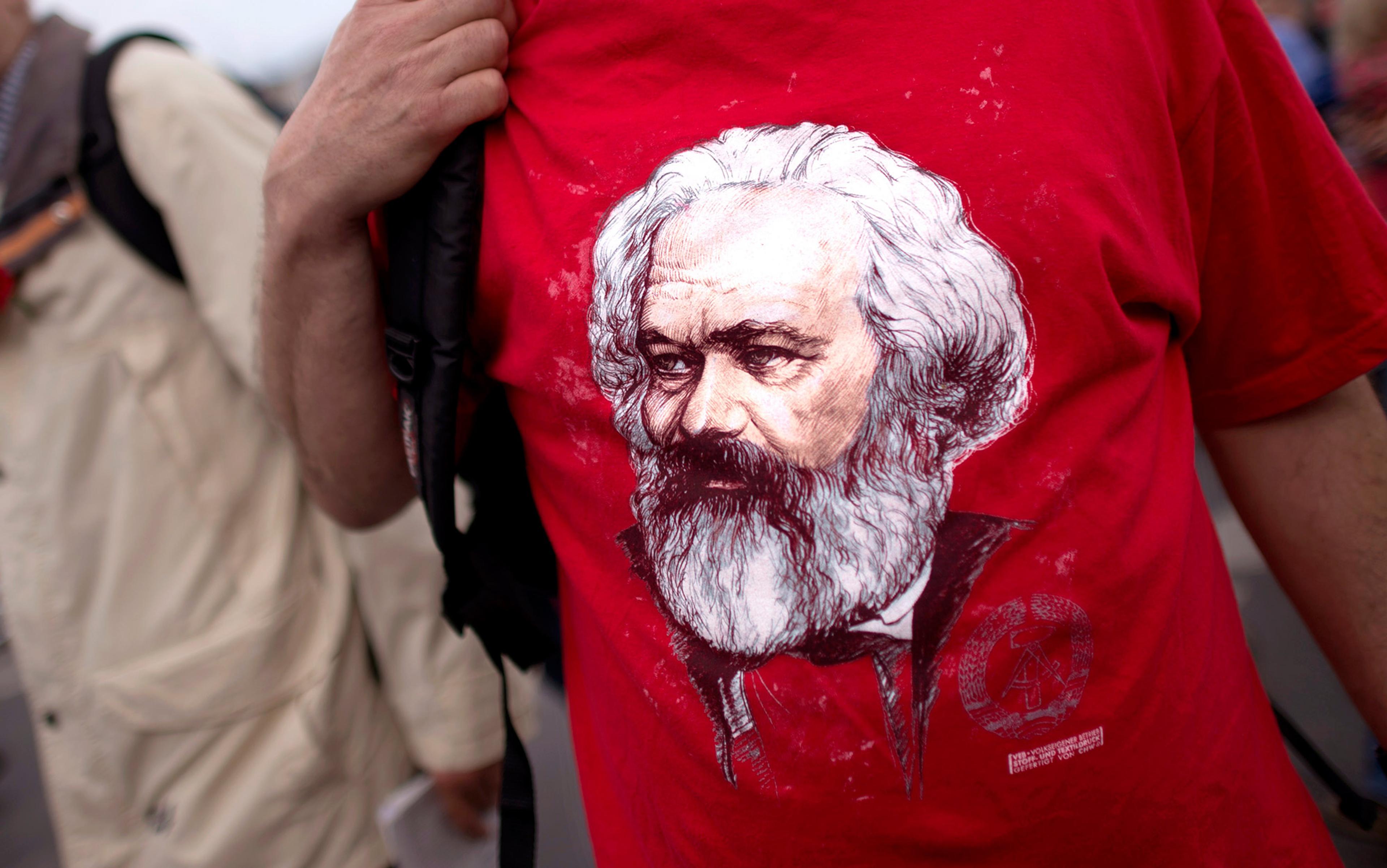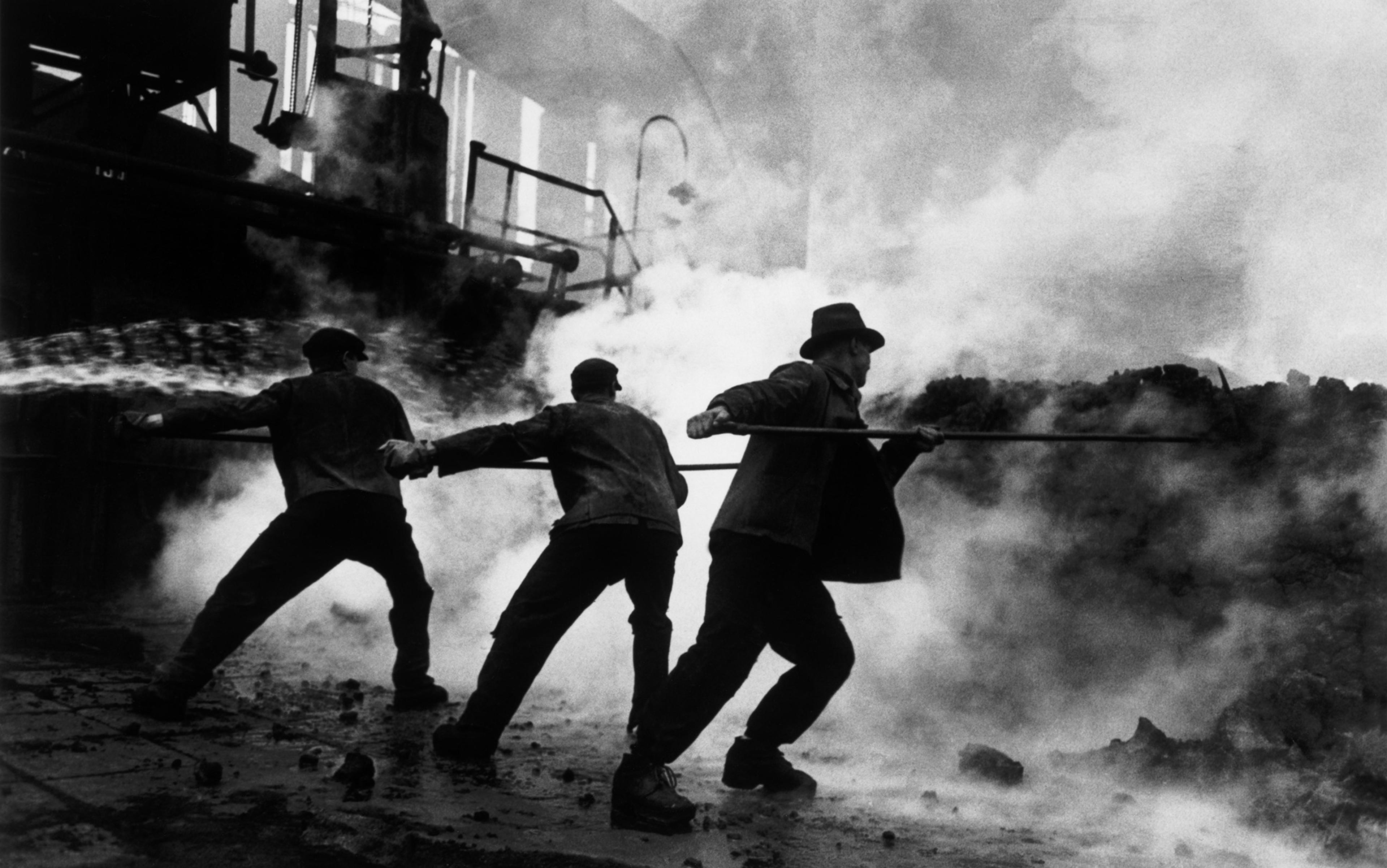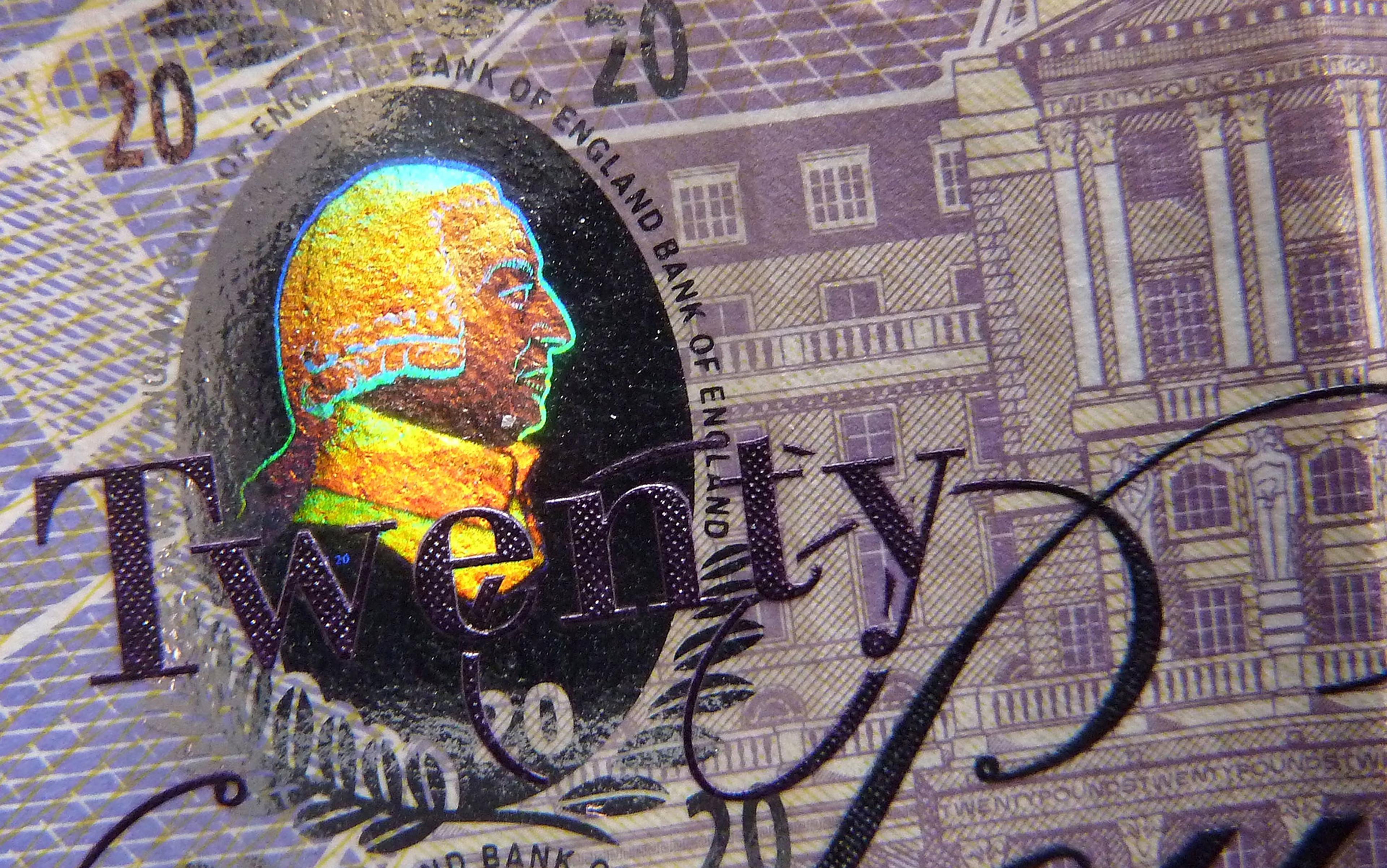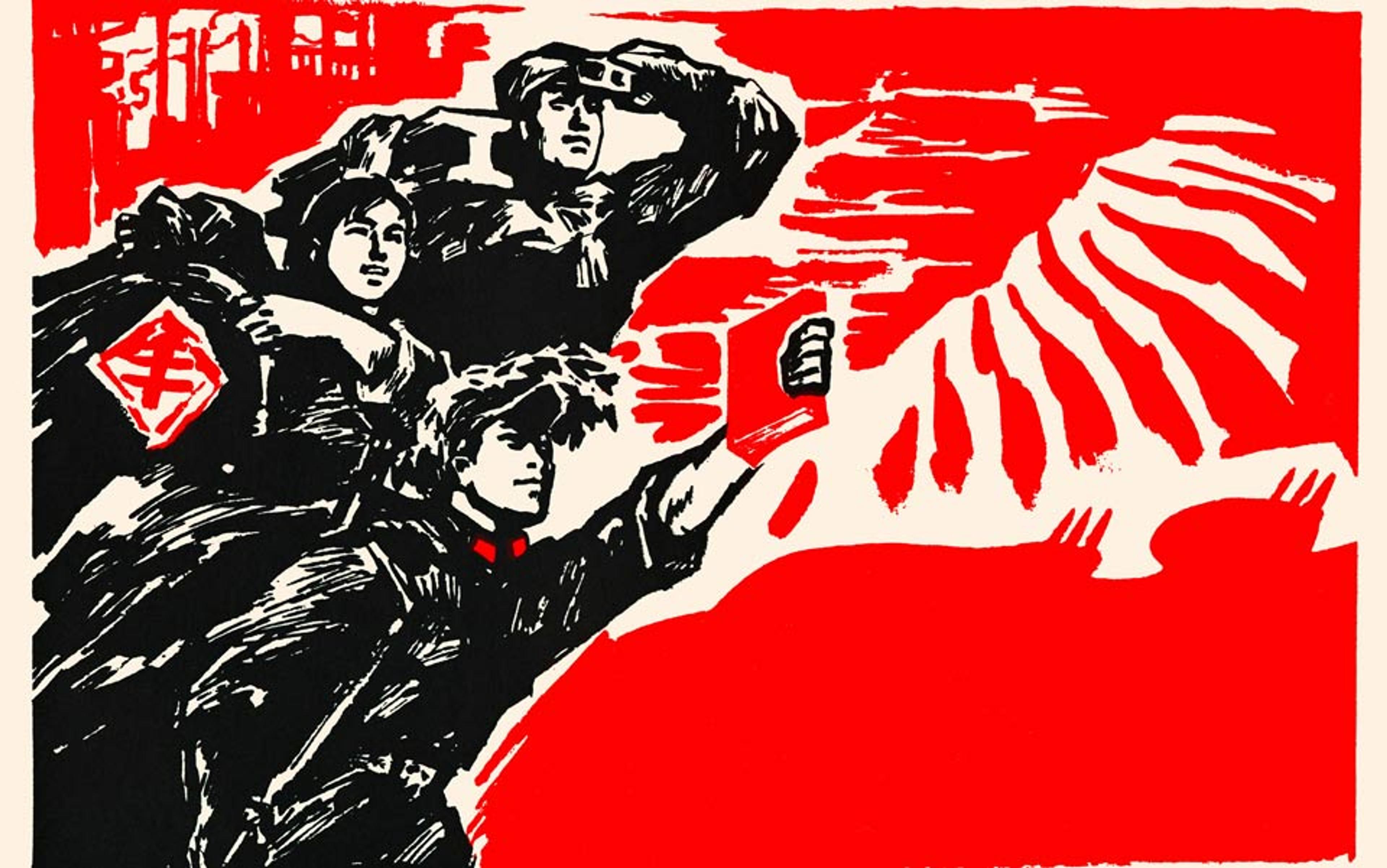The 21st century has already welcomed back Karl Marx (1818-1883), rather on the assumption that he had faded away and has now returned to haunt us. After the financial crashes of 2008, his leonine face appeared on international news magazine covers, feature articles in quality broadsheets, TV documentaries and blogposts. The questions Why now? and Why Marx? are easily answered: capitalism suddenly appeared unstable, unmanageable, dangerously fragile and anxiously threatening. It was possibly in an unstoppable downward spiral, pushing individuals, families, whole nations into penury and subsistence. It also appeared hugely unfair and internally contradictory in very dramatic ways: banks ‘too big to fail’ would get taxpayer bail-outs, recklessness and fraud would go unpunished, the super-rich beneficiaries of oligarchical stitch-ups would maintain their ‘high net worth’. Invocations of risk, competition, ‘free’ markets and rising living standards for all no longer seemed credible. So what were we all to think?
As the most stringently systematic critic to date of capitalism, author of a weighty treatise on the subject, and iconic revolutionary intellectual and ‘grand old man’, Marx seemed a likely candidate to enlighten readers of the Financial Times, Der Spiegel, even Time and Newsweek. As an established figure in the liberal arts curriculum, and way more colourful than any number of drily theoretical economists (even including the very charming John Maynard Keynes), the very familiar bushy-bearded communist would guarantee us an alternative view, and secure a lively public debate.
Dim and distant echoes of the Cold War, West vs East, freedom-loving peoples vs enslaved subjects of Iron Curtain tyrannies, etc – all this mid-20th-century fame actually did Marx some good, having made him indelibly historical without (perhaps surprisingly) totally demonising his thought or discrediting his intellect. Any number of biographies, commentaries, philosophical critiques and political polemics attempted to do him down, particularly from the early 1950s through later decades and well into the 1980s, right up to the fall of the Berlin Wall in 1989. But a counter-movement had also swelled up in the 1960s, and eventually it overtook the ‘Stalinist Terror’ anti-communist, anti-Soviet, anti-‘Red China’, anti-Marx bluster.
Two short books of the later 1930s had already laid the groundwork: Sidney Hook’s From Hegel to Marx (1936), written and published in the United States, and Isaiah Berlin’s Karl Marx (1939), written and published in the United Kingdom. While not uncritical of Marx, and not disconnected from the authors’ own political views, these two books established an important genre: in these works Marx was elevated for the first time to the highest ranks of European philosophy by academic writers who – though writing then as quite young men – soon became notable scholars of repute and made their careers at the highest levels of academia (New York University, and All Souls College, Oxford, respectively). Though writing in English, both were fluent in German and – at least by the standards of the time – well-informed researchers using primary sources. Whatever the vicissitudes of their personal opinions and political positions over the years, these tomes survived, unblemished by anything other than scholarly controversy.
That scholarly and loosely philosophical approach was widely taken up when a ‘humanist Marx’ hit the headlines in the 1960s and caught a wave of student protest, religious activism, ‘Third World’ rebellion and wars of national liberation. The Stalin or Mao version of Marx, and the hermetic East-facing debates that they engendered, looked decidedly stale in Latin America, at the Second Vatican Council, on the anti-war student barricades in the US and France, and anywhere else that the arrogant practice of Great Power politics had caused offence or disaster.
The ‘humanist Marx’ was a world-class intellectual up for debate, rather than a communist icon to be adored or defamed. He was youthful – just in his mid-20s, his texts were hitherto little-known, and moreover they were sketchy, puzzling and sympatico. His editorially titled ‘economic and philosophical manuscripts of 1844’, though published in 1932 for German scholars, were circulating among French intellectuals only from the later 1940s, and hit the Anglophone world in translation at the very end of the 1950s. Several bestselling English versions appeared, but neither communist nor anti-communist Cold Warriors had much to say about them, since the concepts therein – famously ‘alienation’ and ‘species-being’ – had featured nowhere in the orthodoxies through which Marxists and anti-Marxists alike had operated ideologically. Most people could spot Marx’s image and register him as a big-browed intellectual. Many would assume – given the Cold Warrior echoes – that he was Russian (which he wasn’t), but then on discovering that he was German, many Anglophones found him just about as alien, yet still appealing.
Both Stalin and Mao had helpfully provided ‘official’ accounts of Marx’s thought – with due acknowledgement to his very influential friend Friedrich Engels – and there were committed intellectuals on both sides who were more than fluent in the relevant arcana of ‘dialectical’ and ‘historical’ materialism. However, the new ‘humanist Marx’ was quite insulated from all this, since his 1844 manuscript thoughts were ‘Hegelian’ (without anyone’s ‘dialectics’) and ‘historical’ (without anyone’s ‘materialism’). In their own way, they appeared to be quite original, so the youthful Marx could be taken on his own terms, predating any Marxisms at all, and thus any Cold War battlelines, whether intellectual or geographical. One of David McLellan’s first and most influential and successful paperback books was simply titled Marx Before Marxism (1970).
Significantly, the ‘humanist Marx’ had raised the question of economics, though not in the way that 20th-century economists had made familiar, whether they were conventional micro- or macro-economists, or Marxist economists in Moscow or Cambridge. The former ‘mainstream’ economists overwhelmingly ignored Marx and dismissed Marxist economics as politically biased and lacking in rigour; meanwhile, scholars and apparatchiks well-versed in Marxist economics despised ‘mainstream’ economists as uncritical proponents of capitalism. But both sides shared many presumptions and concepts nonetheless in theorising capitalism.
Refreshingly, the ‘humanist Marx’ had set the stage for an examination of capitalist society in ways that bypassed all these efforts in economics, of whichever opposing camp. ‘Alienation’ was neither economics nor Marxist, so it suited the New Left of the 1960s. It functioned as a political critique that required relatively little study, given the brevity of Marx’s early manuscript notes-to-self. In particular, the ‘humanist Marx’ needed no study at all in conventional economics textbooks, based as they were (and still are) on rather abstractly asocial and ahistorical presumptions, and on evidential reasoning that is easily converted to mathematics.
The early Marx’s theory of alienation, however, was rather less vague than it sounds, given that the word refers to feelings of ‘otherness’ or ‘separation’ or ‘estrangement’. In these manuscripts – now canonical as a widely translated text and ubiquitously excerpted for university reading lists – Marx was talking about capitalism as workers experience it, though in terms that were rather more psychological than sociological, but still historically specific, referring to mechanised production, wage-labour employment, and real or metaphorical assembly-line conditions.
The new ‘humanist Marx’ was on-side with visionary intellectuals, uncontaminated with Stalinist political terror
The ‘alienations’ detailed in Marx’s ruminations were of workers from products, workers from processes, workers from each other, and workers from their ‘species-being’. The first three could be easily visualised (even without, as was true of many student readers, much experience of such grinding conditions), whereas the last term was intriguingly philosophical and pointed towards something systemically ‘out of whack’ with ‘the human condition’ – quoting the title of another widely read and self-evidently Germanic book of the times by Hannah Arendt, published in 1958. Any number of deeply felt, loosely organised and generally inchoate critiques of industrial modernity could then adopt Marx, extending even to the Catholic liberation theology and Latin American peasant-farmer activisms.
Thus the ‘humanist Marx’ could evidently stretch way beyond the author’s self-declared and relentlessly argued atheism, and triumph over the still-extant anti-religious persecutions conducted by communist militants in self-styled Marxist regimes. Philosophers, such as John Plamenatz, István Mészáros, Allen W Wood, Bertell Ollman, Kostas Axelos and David Leopold, forgave the rather simple moralising about factory or factory-like working conditions, which had overtones of industrial sociology and ‘pop’ psychology, since ‘species-being’ offered a suitable puzzle that connected with a familiar concern: what is it to be human? And to be ‘realised’ as such, ‘as a species’? What makes humans different from (other) animals exactly? And how should society be organised so as to fulfil this ‘essence’?
Marx’s sketches provided some interesting if incomplete answers, unburdened with references and footnotes (which scholars in philosophy very ably provided over the years). He wrote that humans raise ideas creatively and therefore make history, as opposed to animals whose nature is repetitiously instinctive and narrowly species-delimited. His view was that humans can produce their social lives in the manner of any species, and can indeed remake themselves – even physically and sensuously, as well as morally and culturally – as they do so. If modern industrial production could be redeemed from the everyday numbness (or worse) of this four-fold crisis of alienation, then ultimately humans could flourish in a wholly transformed social setting. Such decidedly non-capitalistic relations of production, distribution, consumption and exchange would then permit individual fulfilment within a community worthy of the species potential.
Thus, the new ‘humanist Marx’ was on-side with visionary, even religious intellectuals, and evidently uncontaminated with Stalinist political terror and Maoist cultural revolution. He was compatible with the quotidian miseries and angst of both factory work and chronic unemployment, with both the commodified sterility of bourgeois consumerism and the banality of mass-produced commercial culture. One-Dimensional Man (1964) by Herbert Marcuse was an update and re-visioning of Marx’s youthful manuscripts, which its author had been reading in the 1930s in Germany. As the ebullience of the 1960s faded into defeat, co-optation, disillusionment and ‘burn out’, so the ‘humanist Marx’ faded into the kind of manageable disputation that excites undergraduates in coursework essays and seminar debates. The end point of this process was a popular, prize-winning biography by the journalist Francis Wheen, Karl Marx: A Life (1999), reducing ‘humanism’ to the ‘humane’ in a highly readable character study.
After the financial crashes of the 21st century, Marx would have to be renewed again to become relevant. What would do the trick?
Marx’s magnum opus, the famously unreadable and unread Das Kapital (1867), was clearly waiting for rediscovery. Again, the ground had been well-prepared, in the usual posthumous way, by further ‘unknown’ manuscripts (this time from Marx’s middle age). This much larger compilation of (yet more) notebook materials had the editorially given and highly Germanic title Grundrisse, or ‘Foundations’ of a critique of political economy. Originally published in two volumes (1939 to 1941), it surfaced in a post-War German paperback reprint, followed by translations in the early 1970s.
In popular excerpts and academic discussion, the Grundrisse was very much stage-two for students of the ‘humanist Marx’. Here was something intriguingly rough-draft, quite rambling, good discussion material, and often quite historical. But it was clearly focused on capitalism as a unique historical phenomenon and systematic social formation. While evidently less philosophical, and far more economic, than the earlier thinking, the writing was nonetheless pleasing for its lack of rigour, compared with the more closely argued opening chapters of Capital, volume 1 (which was often as far as many readers got before deciding they’d had enough).
In short, the first volume of Capital was a predictable stage-three in regenerating Marx (perhaps somewhat in the manner of Doctor Who). It had long ago been dismissed by ‘mainstream’ economists, and its leaden and arcane ruminations on value – beloved by many Marxist study groups up until the 1960s – had had little contact with, or relevance to, the Soviet, Chinese, Cuban and Vietnamese communist regimes and headline Great Power issues. However, the new interest in Capital, sparked by financial op-eds in the 2000s, wasn’t a case of back to the future, reviving interest in the orthodoxies of the ‘labour theory of value’, ‘theory of surplus value’, ‘organic composition of capital’, or even ‘the falling rate of profit’. Rather, the humanist-philosophising Marx became the sit-in Marx of economics-minded anti-globalisation activists and Occupy Wall Street protesters.
Protest movements, like revolutions, are often summed into history as failures since hopes and dreams are never fully realised. The fiery leaders of today often disappear into regression and obscurity, or suffer the recriminations due to those who take power and thus make concessions or engineer reversals. It is important to remember now that the spontaneously generated Occupy movement was actually quite large in terms of numbers and quite wide in terms of geographical spread: estimates suggest nearly 1,000 cities in approximately 80 countries, with many hundreds of thousands of people involved, starting in late 2011 and running strong for about a year. The globalised interlocking activities of mega-rich corporations, financial institutions and governmental agencies (including defence and security establishments) were pilloried in manifestos, statements and press releases as exploitative, anti-democratic and unjust.
Generally, ‘neo-liberalism’ performed a signifying function in these critiques, referencing the winding down of welfare states and the ratcheting up of inequalities, between nations and economies, as well as between individuals and income-groups. Any number of striking statistical representations would tell you that a tiny group of people (overwhelmingly male) owned as much as the poorest 50 per cent of humanity, or that any one mega-billionaire was worth more than so-many national economies put together. Many politicians, business people, governmental regulators and ‘Lefty’ celebrities hastened to get on-side, or at least to make sympathetic noises.
Das Kapital is now the book that portrays capitalists as vampires, sucking the blood of child labourers
Marx was certainly present in this, though as a spectral éminence grise rather than a banner-high icon (too reminiscent of former, Cold War scenarios). But then the ideas of his activist days – particularly in the Manifesto of the Communist Party (1848 ) – have worked their way through CliffsNotes and similar ‘cheat sheets’ into popular consciousness to the point where citational reference isn’t needed, and wouldn’t be helpful anyway. The Manifesto had been published anonymously, and Marx – though publicity-seeking for the socialist movement – didn’t construct himself then or later as a guru-author or cult leader (quite the opposite). The Communist Party, of the Manifesto’s title, was an aspiration generated by a tiny international committee, and even in the revolutions of 1848 it disbanded such organisation as it had, merging with the anti-authoritarian fray of broadly democratic crowds and political groups. By 2011, Marx and Engels’s ideas were freely circulating online in the animation compilation Communist Manifestoon (which is excellent, and a must-watch, by the way).
The Marx-of-the-moment, though, isn’t exclusively the property of Occupy, but readily appears in thoughtful reporting and comment with rather more specific points of reference. Here a Marx-of-the-metaphor arises from Capital, vol 1, where reporters and commentators, in tune with the times, are looking for catchy critical ‘takes’ on capitalism. Style triumphs over content, and trope over proposition, making Marx’s very divergence from the dry logics of econometrics an advantage. Capital is now the book in which Marx portrays capitalists as vampires, sucking the blood of child labourers; as werewolves, howling and hungry for worker-prey; of ‘magic caps’ worn by economists to make the realities of capitalist exploitation disappear.
The sarcastic Marx of the ‘send-up’ gets a look-in here, too, portraying economists as the bumbling numbskulls Seacole and Dogberry (from William Shakespeare’s Much Ado About Nothing), and then scoffing at their very evident yet hypocritical self-satisfactions. In sum, Marx’s critical edge, sharpened in successive reworkings of his one truly major published book, has come to the fore in presenting a critical yet readable ‘take’ on capitalism. Underlying this ‘take’ is a notion that capitalism is in fact a system, with essential properties that can, in principle, be specified. Marx is arguing passionately that ‘mainstream’ economists, contrary to the self-serving claims that there is no alternative, have simply got the wrong principles. Or at least his writing is helping to generate economic principles that offer a more realistic ethics, a more developed commitment to democracy, and a more thorough exploration of the relationship between markets and freedoms.
This is not to say that Marx provides all this, in Capital, vol 1, or elsewhere. He doesn’t. But then we don’t solve our problems ‘by the book’, anyway. Metaphors are potent in conveying meaning, indeed metaphors are meanings as we make them. They don’t have to be a substitute for, or a ‘way in’, to more rigorous theories of proposition, syllogism and conclusion. They actually make Marx’s argument for his readers, alongside, and just as much as, his formal explication. This must be so, otherwise they wouldn’t be there. Essentially, Marx is saying (albeit in my own words here):
Dear Reader, just as you don’t believe in witches, goblins and fairies, or in vampires, werewolves and magic, you should have as little faith in the concepts and theories of an economics that takes capitalism for granted, and constructs an ‘economic man’ in its image. Our social experience of capitalism is a historical product, a human construct, not a necessary or eternal truth following from human nature, God’s will, or the progress of history. You know that social systems have been radically otherwise in the past, that money is a relatively recent historical invention, and that the ever-expanding spiral of capitalist aggrandisement benefiting a tiny minority (and concomitant ‘austerities’ for the 99 per cent, as in the Occupy slogan) is a product of the past few decades. If the institutions of democracy and the laws of property are more than ever on the side of the 1 per cent (or lately, the 0.01 per cent, in some comments), then it’s time to struggle and ‘take back control’!
Marx also warned that those with advantages will fight (or more usually hire poorer people to fight for them) to maintain the system from which they benefit. He also counselled that neither he nor anyone else can reasonably pretend that social change in opposition to it is all very simple and easy to implement.
One of Marx’s powerful and ubiquitous metaphors from Capital, vol 1, is ‘the fetishism of commodities’, most often wrongly taken in a neo-Freudian sense to refer to an undue preoccupation with consumer products and advertisers’ values. That’s not what he meant. ‘Social relations between things, and thingly relations between people’ is rather more like it, as a summary of what’s really wrong. Or in other words, we have created a world of markets and prices (‘social relations between things’) that we experience as an everyday and often brutal reality (‘thingly relations between people’). Indeed, many of us become the kind of people who merge with economic realities and thus become inured to, or unconscious of, any brutality in the normality at all. Marx’s ‘take’ on capitalism is that the social world could be otherwise, less brutal and less destructive, if we organise to make it otherwise. But it won’t, if we don’t.






